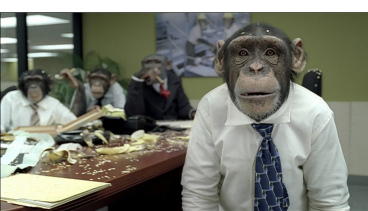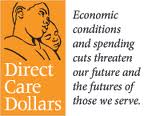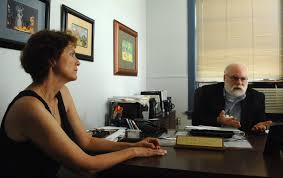Burn the Boats
By John Greco
Originally published on May 3, 2012
Re-posted with permission from johnponders blog
 A long while ago, a great warrior faced a situation which made it necessary for him to make a decision which insured his success on the battlefield. He was about to send his armies against a powerful foe, whose men outnumbered his own. He loaded his soldiers into boats, sailed to the enemy’s country, unloaded soldiers and equipment, then gave the order to burn the ships that had carried them. Addressing his men before the first battle, he said, “You see the boats going up in smoke. That means that we cannot leave these shores alive unless we win! We now have no choice—we win, or we perish! They won.
A long while ago, a great warrior faced a situation which made it necessary for him to make a decision which insured his success on the battlefield. He was about to send his armies against a powerful foe, whose men outnumbered his own. He loaded his soldiers into boats, sailed to the enemy’s country, unloaded soldiers and equipment, then gave the order to burn the ships that had carried them. Addressing his men before the first battle, he said, “You see the boats going up in smoke. That means that we cannot leave these shores alive unless we win! We now have no choice—we win, or we perish! They won.
— Napoleon Hill, in Think and Grow Rich
This story is likely familiar; it is often attributed, incorrectly, to Cortez, and it is usually used to compellingly explore the topic of motivation.
You will probably not be surprised to learn that I’m going to go somewhere else with it. I want to talk about change, and what my profession curiously calls change management.
There are two basic theories of change. One of them is flawed.
One holds that change begins with our knowledge and attitudes. Leaders who hold this theory of change implement initiatives that are training intensive, zeroing in on changing our attitudes. The more we know, the more we understand, the more we will adjust our attitudes. Attitudinal change, then, leads us to change our behavior, and as we all change, the organization changes.
Behind door number two we have the theory that says just the opposite — we change our attitudes in response to a change in our behaviors; and we change our behaviors in response to changes in our environment.
I would like to believe that I change my behavior based on different perspectives that I’ve received through learning new and different things. I would like to believe that I don’t need to be “forced” into changing.
 What do you think?
What do you think?
I’ll bet you, like me, would like to think the first theory of change is right, but, in fact, it is exactly backward.
Initiatives based on the first theory of change will take forever to produce meaningful change, if at all. Odds are, it won’t produce a tipping point for the organization before it crosses the frustration threshold of its leaders.
Burning the boats is way more effective.
We change our behaviors because we have to; and we have to because something around us, outside of us, has changed.
I liked hamburgers as a kid, but good gosh no cheese; I wouldn’t eat cheeseburgers, period. Until one day, when I didn’t have an option. I love cheeseburgers now …
What do you think was more responsible for a reduction in smoking: the public service announcements and surgeon general’s warning or the banning of smoking in restaurants, bars, and other public places?
The surprising truth is that we don’t change when we have control and can make choices; we change when we don’t have control and we have limited choices.
Effective leaders don’t try and change their people. They know that they simply do not control their people… And the more they try and directly change our attitudes, the more we push back, dig in, and resist.
Instead, they burn the boats! They redesign the structure; rewrite organizational policies; reengineer processes, integrate technology and tools, update the incentives, clarify the measurements…
Instead of changing us, they change what carries us, what affects us; they change what we depend on; they change what is all around us.
They burn the boats.
Adapted from Managing Change: Cases and Concepts. Todd Jick.

 Last week I was out to lunch with two male non-profit friends in downtown Chicago when the topic of women board volunteers came up. This happens from time-to-time, and when it does I always bite my tongue because I tend to have strong opinions on this subject. So, I took a deep breath and prepared for what I assumed was going to be one of those “difficult and uncomfortable conversations“. Boy oh boy . . .was I wrong (and pleasantly surprised).
Last week I was out to lunch with two male non-profit friends in downtown Chicago when the topic of women board volunteers came up. This happens from time-to-time, and when it does I always bite my tongue because I tend to have strong opinions on this subject. So, I took a deep breath and prepared for what I assumed was going to be one of those “difficult and uncomfortable conversations“. Boy oh boy . . .was I wrong (and pleasantly surprised). One particularly hungry monkey eagerly scampered up the pole, intent on retrieving a banana. Just as he reached out to grasp the banana, he was hit with a torrent of cold water from an overhead shower. With a squeal, the monkey abandoned its quest and retreated down the pole.
One particularly hungry monkey eagerly scampered up the pole, intent on retrieving a banana. Just as he reached out to grasp the banana, he was hit with a torrent of cold water from an overhead shower. With a squeal, the monkey abandoned its quest and retreated down the pole.  We, like our monkey friends, become conditioned. Don’t climb that pole! we learn, when we see what happens to those that do … Then we teach don’t climb that pole! to the newcomers we welcome into the organization, telling the story of what happened to our ambitious co-worker Moe when he climbed that pole it was like a cold shower stopped him right in his tracks! … We learn that we don’t need to climb the pole; we are growing sales and driving profits without climbing the pole; it over time becomes an afterthought, except of course to orient the new talent; and there comes a time when a newbie asks“Why don’t we climb the pole?”and we’re all kind of stumped “dunno; it’s just the way we do things around here!”
We, like our monkey friends, become conditioned. Don’t climb that pole! we learn, when we see what happens to those that do … Then we teach don’t climb that pole! to the newcomers we welcome into the organization, telling the story of what happened to our ambitious co-worker Moe when he climbed that pole it was like a cold shower stopped him right in his tracks! … We learn that we don’t need to climb the pole; we are growing sales and driving profits without climbing the pole; it over time becomes an afterthought, except of course to orient the new talent; and there comes a time when a newbie asks“Why don’t we climb the pole?”and we’re all kind of stumped “dunno; it’s just the way we do things around here!”
 Boards meetings can quickly go from productive to destructive in any number of ways. The following are just a few lessons I’ve learned throughout the years and thought board volunteers might benefit from reading:
Boards meetings can quickly go from productive to destructive in any number of ways. The following are just a few lessons I’ve learned throughout the years and thought board volunteers might benefit from reading: When you don’t know where you’re going any road will get you there
When you don’t know where you’re going any road will get you there Time of Death: 2 hours after we started talking about this
Time of Death: 2 hours after we started talking about this
 Every once in a while this job allows me to do something fun and amazing. Last week was one of those times. During an organizational assessment project, I had a brush with history when one of my interviewees turned out to be Nate “Bobo” Smalls. Who is this guy? Quite simply, Bobo is one of the last remaining baseball stars from the Negro Baseball League, which is a piece of history that the world tries very hard not to remember or honor. I walked away from my interview with Bobo with goosebumps on my arm.
Every once in a while this job allows me to do something fun and amazing. Last week was one of those times. During an organizational assessment project, I had a brush with history when one of my interviewees turned out to be Nate “Bobo” Smalls. Who is this guy? Quite simply, Bobo is one of the last remaining baseball stars from the Negro Baseball League, which is a piece of history that the world tries very hard not to remember or honor. I walked away from my interview with Bobo with goosebumps on my arm. Bobo recalled every neighborhood having at least one mentor.
Bobo recalled every neighborhood having at least one mentor. The epiphany
The epiphany
 The human element
The human element Welcome to O.D. Fridays at DonorDreams blog. For the last few years, we’ve looked at posts from John Greco’s blog called “
Welcome to O.D. Fridays at DonorDreams blog. For the last few years, we’ve looked at posts from John Greco’s blog called “ Here are just a few examples of what those situations looked like:
Here are just a few examples of what those situations looked like: The definition of the word “grace” according to a Google search is: “simple elegance or refinement of movement“.
The definition of the word “grace” according to a Google search is: “simple elegance or refinement of movement“. Welcome to O.D. Fridays at DonorDreams blog. Every Friday for the foreseeable future we will be looking at posts from John Greco’s blog called “
Welcome to O.D. Fridays at DonorDreams blog. Every Friday for the foreseeable future we will be looking at posts from John Greco’s blog called “ As the years passed, Larkin Center added more services including a school for children struggling with behavior disorders and counseling services for adults.
As the years passed, Larkin Center added more services including a school for children struggling with behavior disorders and counseling services for adults. There will be lots of news coverage about the “failure“. Many people will weigh-in with what they think went wrong and what could’ve and should’ve been done differently. There might even be a victory lap taken by a few Elgin city council members who openly fought with Larkin Center because they didn’t think “those kids” belonged in our community.
There will be lots of news coverage about the “failure“. Many people will weigh-in with what they think went wrong and what could’ve and should’ve been done differently. There might even be a victory lap taken by a few Elgin city council members who openly fought with Larkin Center because they didn’t think “those kids” belonged in our community. When I think about the donors who invested in efforts to save this organization in the final months and years of its life, I want to honor those efforts.
When I think about the donors who invested in efforts to save this organization in the final months and years of its life, I want to honor those efforts. Welcome to O.D. Fridays at DonorDreams blog. Every Friday for the foreseeable future we will be looking at posts from John Greco’s blog called “
Welcome to O.D. Fridays at DonorDreams blog. Every Friday for the foreseeable future we will be looking at posts from John Greco’s blog called “ I believe there is a misconception out there about strategic planning because I keep running into executive directors who think just because the current plan is expiring that is must be time to begin work on a new strategic plan. I also oftentimes run into folks who believe it is a perfect time to start planning when their agency is experiencing instability, blurriness, and confusion. In my humble opinion, there is a time and place for strategic planning and embarking on this journey at the wrong time can be at best frustrating and at worst damaging.
I believe there is a misconception out there about strategic planning because I keep running into executive directors who think just because the current plan is expiring that is must be time to begin work on a new strategic plan. I also oftentimes run into folks who believe it is a perfect time to start planning when their agency is experiencing instability, blurriness, and confusion. In my humble opinion, there is a time and place for strategic planning and embarking on this journey at the wrong time can be at best frustrating and at worst damaging. As I had hoped, I found a section titled “Key Questions to Assess Readiness and Capacity”. Here are those questions:
As I had hoped, I found a section titled “Key Questions to Assess Readiness and Capacity”. Here are those questions: We’re not ready, but we still need a plan!
We’re not ready, but we still need a plan!